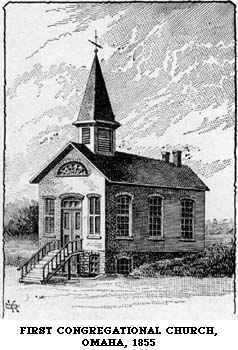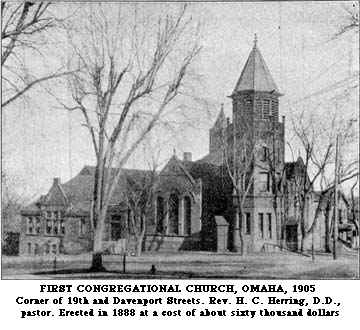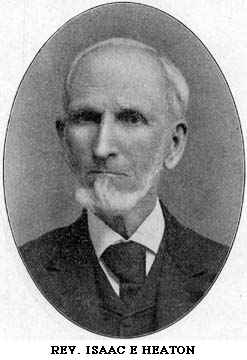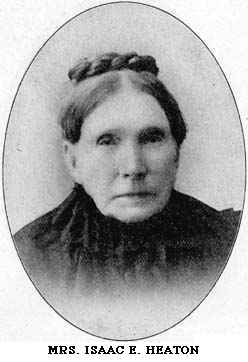
NEGenWeb Project
Resource Center
Church
Of the hardship of Mr. Gaylord's journey to Nebraska we need not write; but it is well to note that the winter of 1855-56 was intensely cold, the thermometer ranging from 25° to 32° below zero. It is no wonder, then, that in the house, or partial shelter we may better say, which our missionary found, water froze within a foot of the stove, which was heated as hot as the best fuel could make it.1 It surely took courage and a warm heart to withstand the cold. But how shall a missionary live on $600 a year when he pays $21 a month rental for a two-room house, $7 to $8.50 for 100 pounds of flour, and 12 1/2 cents a pound for sugar? This was the munificent salary granted by the Home Missionary Society, and but little was added on the home field. Our pioneer fathers and mothers knew the meaning of sacrifice, and the minister's wife more than anyone else entered into its sterner experience.
But severe though the winter was, it soon passed, and our missionary was visiting his large field and organizing churches.
Mr. Gaylord was a man who could never be content with a single parish. The "regions beyond" were his also. When he reached Omaha he found a Rev. Isaac F. Collins, M. E. minister, a Methodist class of six members, and a Baptist minister by the name of Rev. William Leach. With these he took turn in holding services in the council chamber of the old state house, and "Sunday was brought into Omaha."
It was May 4, the year 1856. On this date, which was the Lord's Day, Mr. Gaylord organized the First Congregational Church in Omaha with nine charter members. This was the first church of our order in Nebraska, not large in

numbers, but strong in faith and good works. A vigorous weekly prayer meeting was established, a flourishing Sunday school was maintained, woman's work in the church inaugurated, and in due time a new church building erected, affording seats for 225 persons, and costing $4,500, exclusive of furnishings.
| 22 |
CONGREGATIONAL NEBRASKA
|
The week following the organization of the church in Omaha Mr. Gaylord organized a church in Fontanelle, where he found quite a number of Congregationalists from the First Church in Quincy, Illinois. This church had

twenty-three charter members, and it was in Fontanelle that the first educational work of the denomination was undertaken. The settlement began in 1854 and was named for Logan Fontenelle, a chief of the Omaha tribe of Indians.
In the very beginning we find temperance work taken up, and every effort made to stem the tide of intemperance

which was coming like mighty billows upon the land. From that day on our churches have ever taken a strong and decided stand against intemperance and kindred vices.
"In 1856 the Rev. Isaac F. Heaton came with his family from Wisconsin to Nebraska and located in Fremont, then
| 24 |
CONGREGATIONAL NEBRASKA
|
a mere hamlet. He came to teach, but seeing the great need of ministers he began preaching, and with the few others shared the trials and experiences of pioneer life on the fron-

tier. Within a few months he succeeded in gathering a church."2
The Fremont church was organized August 2, 1857, with seven charter members.
2 Gaylord's Life, p. 197.